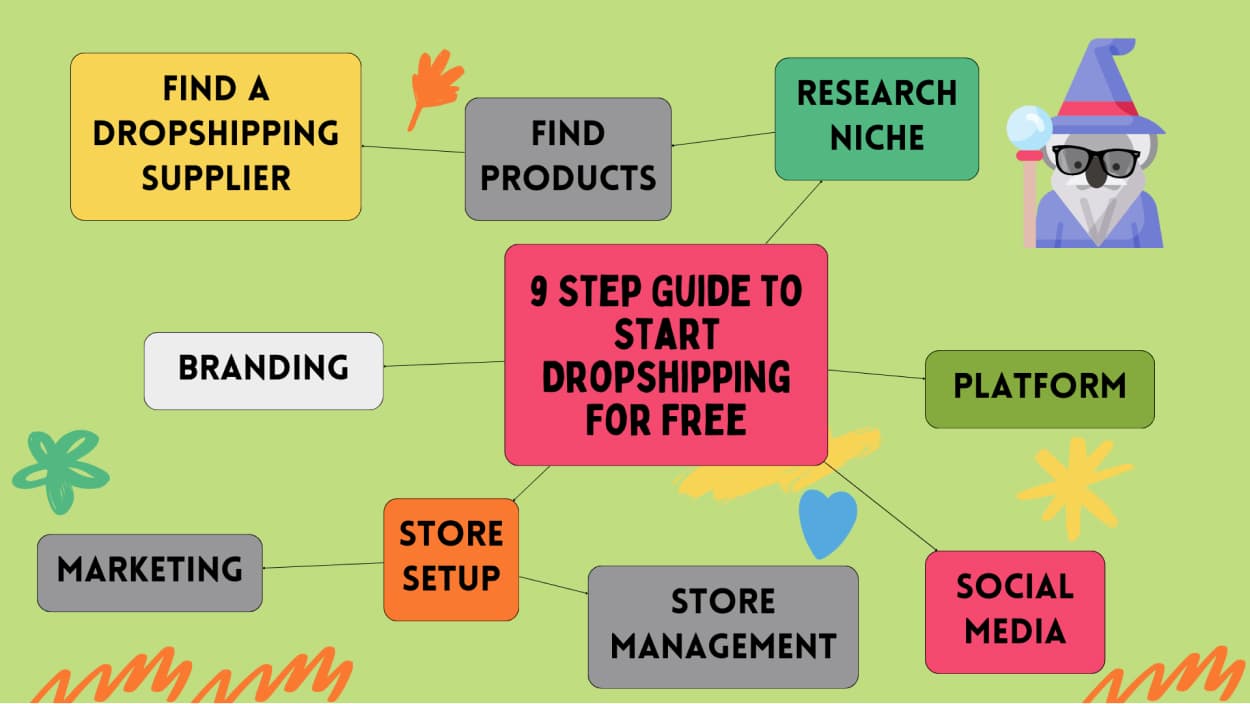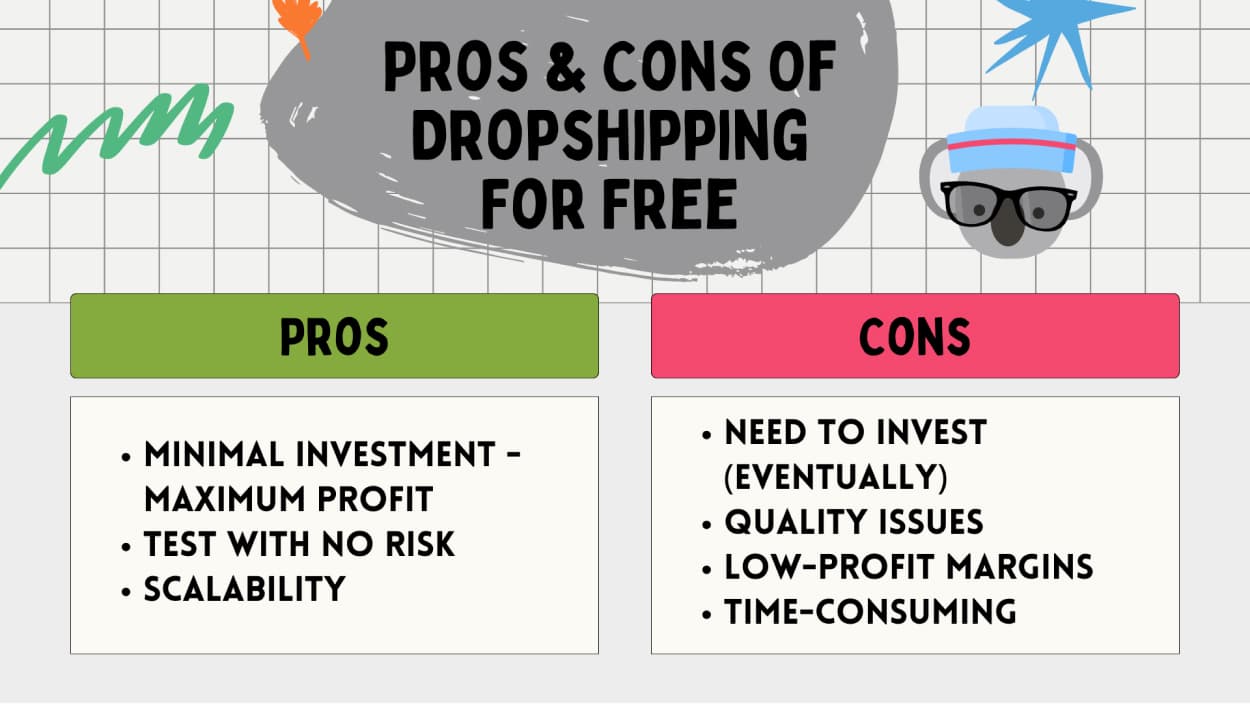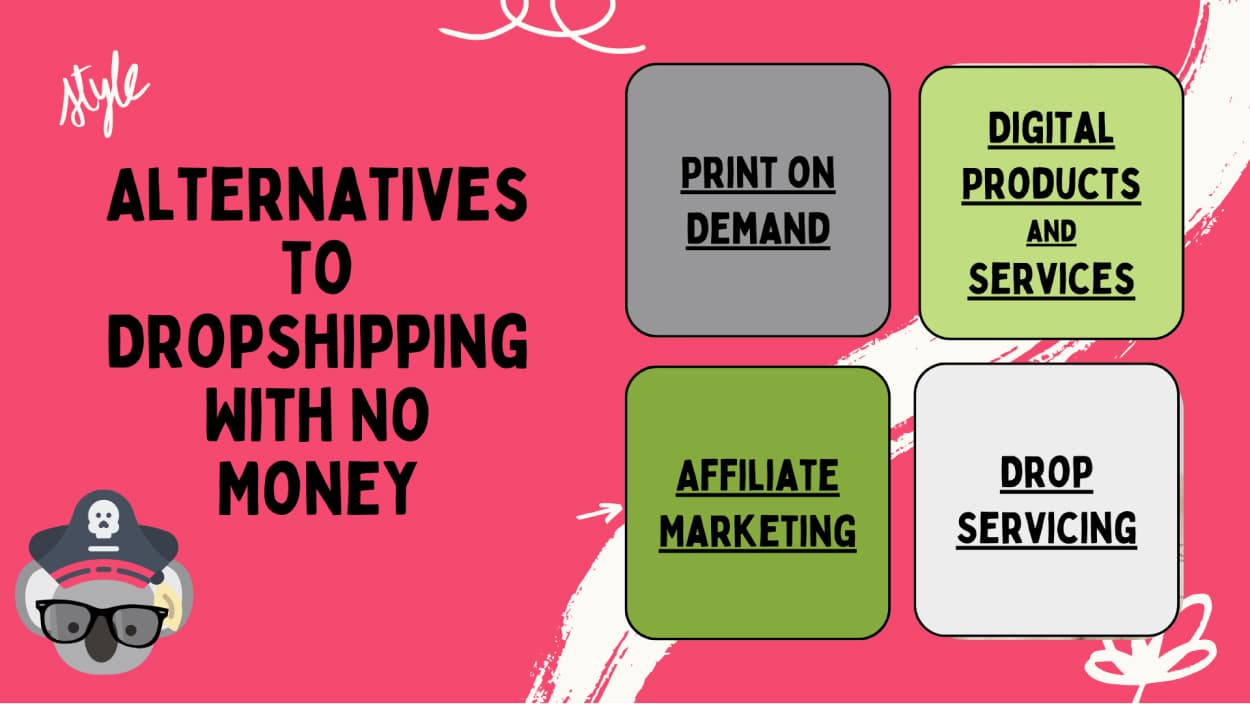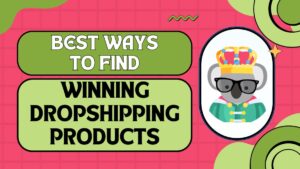The global events of recent years jump-started a revolution in the e-commerce sphere and drastically changed our collective shopping habits. Today, instead of going to the store to make a purchase, we turn to our laptops and phones. Retailers have seen a significant rise in digital orders, and the revenue from these purchases is only expected to increase.
The money-making possibilities in this market are seemingly endless, so it’s no surprise that more and more savvy entrepreneurs want a piece of the online action. In this race to turn a profit using the Internet, dropshipping has emerged as an option for those looking to turn a high return on a low investment. In this article, we’ll guide you through the process of starting your own dropshipping business with a minimal initial investment.
Can You Start Dropshipping With No Money in 2024?
Most prospective online retailers ask the question, “How to start dropshipping for free?” Is it possible to generate an income from an endeavor you’ve put nothing into? In short, yes, it is, but it’s a challenge that requires a lot of effort, creativity, innovation, and, most of all, strategic planning. You’ll need to invest time and research to find free resources and platforms to prepare you for future success.
Still, it’s important to realize that while dropshipping for free is possible, scaling up your operations will incur eventual costs. That doesn’t change the fact that figuring out how to run your dropshipping business for free is the best way to learn the ropes, scope out the market, test new ideas, and try different selling platforms. It will also give you time to figure out your niche and devise a branding strategy that makes your online store unique and drives sales.
9-Step Guide to Start Dropshipping For Free
Deciding how to start dropshipping with no money can take time and effort. Luckily, we’ve prepared a thorough step-by-step guide, which explains everything from free dropshipping platforms to how to find reliable suppliers for your store. Let’s begin with the 9 most important steps to start dropshipping for free!

1. Pick a Free Platform
The first step to start dropshipping is to start educating yourself on the many platforms available to sellers. The good news is that some of them are free to use, such as Spocket, Dsers, Etsy and Modalyst. They are a good avenue to explore for no-cost dropshipping but offer only the basic functionalities.
Alternatively, if you want to upgrade and integrate more features into your storefront without investing money, you can opt for platforms that offer free trials for a limited period. For instance, vendors can test out Shopify for 3 free days and pay $1 for the next 3 months or try 30 free days of Zendrop to evaluate if the rewards are worth the cost.
Another cost-free dropshipping option is attempting to establish a presence on social media, but the competition is fierce unless you find a gap in the market that only your products fulfill.
2. Research and Find a Profitable Niche
The next step is finding that special niche that will allow you to stand out with your one-of-a-kind offer and unique selection. During the deliberation, consider your personal interests and what brings you joy because it’s much easier to market something you’re interested in.
If you’re having trouble being inspired, try performing a market analysis. Free tools like Google Trends and social media hashtags can tell you what products or services are currently popular with the majority of audiences. At the same time, they will give you an inkling of what is slowly coming into fashion.
More astute sellers use extensions like Koala Inspector to get the inside scoop on their dropshipping competition. These aids will give you a comprehensive analysis of any Shopify business, and the insights you glean can be applied to your venture.
3. Find Products That Sell
The most important thing for success in the e-commerce market is choosing sellable products. To find winning products you always need to have your finger on the pulse of the industry and identify hot new sellers before everyone else.
An easy way to do that is to use our custom built Shopify spy tool – Koala Inspector, which provides a peek into the inner workings of other Shopify sellers. Installing Koala Inspector on your device lets you gain instant insight into an e-shop’s complete inventory, bestsellers, newest additions, pricing structure, and much more.
4. Find a Dropshipping Supplier With No or Low Upfront Cost
Another important aspect of the dropshipping business is being able to find reliable suppliers. Regardless if you’re looking for more generalized items that have mass appeal or niche categories that target specific demographics, you can always turn to tried and tested online providers like:
- Aliexpress
- CJdropshipping
- Alibaba
- Hypersku
- Crov
Such wholesale sites have a massive selection of products in every category, so the best way to pick the top suppliers is to evaluate them based on several criteria:
- Reliability – They must be trustworthy suppliers that always ship orders on time and follow the buyer’s specifications.
- Product quality – The product must be long-lasting and durable, and there shouldn’t be variations in quality from batch to batch.
- Shipping times – The items must ship out within a reasonable period from when the order was placed and arrive in the given time frame.
- Shipping prices – To lower the overhead costs, choose suppliers that offer low-cost or free shipping.
- User reviews – Always read the reviews left by other users to ensure the supplier’s rating accurately reflects the satisfaction of their clients.
Not everyone is comfortable signing a contract with an offshore retailer. In that case, you can always visit trade shows and network with local businesses to try and establish a working relationship and find a good supply of products.
If the above options aren’t appealing, you can always try the online second-hand market. Retro and vintage items are always on trend, and eagle-eyed pickers can turn low-cost funds into real money-makers.
5. Decide on Branding
Branding is an important part of creating a recognizable presence on the online sellers market. Decide on your brand voice and message and create a brand identity that you can incorporate into every aspect of the business.
Create a catchy name and use free design tools like Canva to create a distinct logo and banners for your online store. You can take this mindset further – edit product images and add graphics that will seamlessly blend even stock images into your signature style. After you establish the look and vibe of your store, extend the branding to other business aspects, like a personalized email address. Services like Zoho make opening a free business email with a personalized domain easy.
6. Set Up Your Store
Decide on your dropshipping business setup and open a store on any e-commerce or social media platform. This process is free, and many of these providers have free templates and tools to get a shop up and running. Make sure to use high-quality images and add detailed descriptions of the items to avoid looking like all the other online stores out there.
7. Set Up Social Media
Establish a presence across top sites like Instagram, TikTok, and Facebook, and build an audience by creating regular content and engaging with followers. Having the same username across all social media accounts makes the store recognizable and easy to find. Ensure that your brand voice and identity are consistent in each post you make, and strive to build a loyal customer base.
Encourage your followers to interact and share your content so that you can increase your reach without investing in marketing campaigns or running paid ads. Use trending hashtags to increase the chances your product ends up on the platform’s Recommended or For You pages.
8. Promote Your Store Using Free Marketing Strategies
Marketing is usually a significant investment, but thrifty entrepreneurs can use the following strategies to advertise their business for free:
- Free email marketing – Email marketing remains one of the most effective and profitable advertising channels available to business owners. Services like Mailchimp have free plans that allow business owners to send out newsletters and targeted mail campaigns to their follower base. The free plan comes with limited pre-built templates and analytics reports that simplify the marketing process.
- Social media – With 4.89 billion users worldwide, social media has an unlimited marketing potential for your business. Tap into it by creating business profiles on all relevant platforms and start building an audience base. Create fun, engaging, and unique posts, and increase their reach by adding relevant hashtags. Strategically leveraging social media can generate revenue with no upfront costs.
- SEO – Mastering search engine optimization techniques will increase your site’s visibility and help it rank higher in search results. Ending up on the first page of Google will increase the organic traffic to your e-commerce store. So, optimize your site by using the most search keywords and having quality meta titles and meta descriptions for your landing pages.
- Competitor research – If you’re unsure what keywords to use for the SEO strategy or the types of ads to run, we recommend researching what the competition is doing. Tools like Koala Inspector will allow you to see what marketing campaigns they are launching or the specific terms they use in their product descriptions.
9. Monitor and Manage Your Store
In our expert opinion, the key to success is constantly monitoring and managing your e-commerce business. Get familiar with backend analytics and use that data to propel your store forward into greater success. The market is constantly evolving, and consumer preferences can change on a dime.
Access to extensive statistics will help you make data-driven decisions and even anticipate upcoming trends in the digital marketplace. There are plenty of free analytics tools available that provide unique functionalities, such as:
- Google Analytics 4 – It helps you track website traffic and measure key metrics like page views, bounce rate, and conversion rates.
- Google Search Console – This tool focuses on visibility in search engine results pages and identifies keywords driving traffic to your site, identifies potential ranking issues, and helps attract more organic traffic.
- Hotjar – It visually represents user behavior by creating heatmaps of the most clicked areas on a website, recording user sessions to understand their navigation patterns, and conducting surveys to gather user feedback.
Pros & Cons Of Dropshipping For Free

Trying to find the cheapest way to start dropshipping is certainly an interesting challenge for newcomers to the e-commerce landscape. It presents a unique opportunity to learn the ins and outs of the business and apply that experience to expand operations. On the flip side, it presents some significant challenges that need to be overcome to achieve eventual success.
Pros
Minimal Investment – Maximum Profit
Taking advantage of free tools and platforms basically means that you’re making something out of nothing. Every dollar you make using these methods is pure profit, so try to get the most out of their free functionalities and maximize your earnings as much as possible.
Opportunity to Test With No Risk
Starting your dropshipping journey with no monetary investments minimizes any potential risks. Even if your initial attempts are less than profitable, you still can walk away in good financial standing and with valuable experience that you can apply to your next venture. If the initial store fails, you still have the freedom to walk away and start anew while avoiding the mistakes you made the first time.
Scalability
When running a dropshipping store on a completely free model, the opportunities to scale up may come less often. Still, you can expand your business by adding more items to your inventory, increasing the quality of your product photos and descriptions, and taking every opportunity to further establish a unique brand presence.
Cons
You Will Need to Invest Money Eventually
While starting in e-commerce without investment is feasible, it’s realistically improbable to continue operating that way. Free trials are valid only for a limited period, and word-of-mouth marketing on social media has a limited reach.
Scaling up and significantly growing a business requires actual cash investments into marketing, logistics, and owning or hosting your e-store domain. This will allow for the integration of better functionalities that lead to greater customer satisfaction.
Quality Issues
When you dropship, you rely on third-party suppliers to fulfill orders and deliver the right product, and many things are out of your control. The key to building a loyal customer base and getting repeat business is having a diverse inventory and adding new products that maintain the same level of quality, but the number of reliable, low-cost suppliers is very limited. Higher-caliber wholesalers may be more expensive, but the price will ultimately be worth it.
The same goes for the dropshipping platforms. The free versions offer only the most basic options and functions for sellers and buyers, which can poorly reflect on your brand’s image.
Low Profit Margins
Without investing money into buying bulk inventory or even manufacturing branded products, the profit margins from your sales are likely to remain on the lower side. The market is flooded with generic items that consumers can find in most online shops, so your profits will remain insignificant unless you make an effort to stand out.
Even though you might want to keep expenses to a minimum for as long as possible, that mindset might impede your growth potential and stand in the way of making the business profitable.
Time-consuming
Attempting to run a dropshipping operation for free is an arduous undertaking. While you might be saving money, you’re paying with your free time. It takes a lot of effort and hours spent researching and performing individual tasks, which paid tools can run simultaneously and finish in moments.
You need to manually manage your dropshipping store, fulfill orders, and handle customer inquiries. This leaves you less time to focus on marketing, product development, and defining your brand’s voice.
“Can you start dropshipping with no money?” The answer is a resounding yes, but interested parties must be aware that further investment is necessary to build a recognizable brand and a stable and profitable career. Nonetheless, going the free-of-charge route is a good way to test the e-commerce market and become familiar with this business model and its potential for profitability.
The best advice on dropshipping for beginners we can give is to take this no-risk opportunity to make mistakes and learn from them. Every misstep is a valuable lesson you can later use in any other work dealings. If figuring out how to dropship with no initial cost seems like a good business idea, there are other free opportunities you can also try.
Good Alternatives to Dropshipping With No Money
If the thrill of a completely free side hustle sounds appealing, we’re happy to give you other alternative ways to make money without any overhead costs. The digital market is full of lucrative possibilities – you just need to know where to look for them. To get you started, our team has prepared a few options with significant levels of profitability.

Print on Demand
This is an order fulfillment method that prints merchandise on demand and ships orders after a sale has gone through. If you have a creative vision and some illustration skills, you can upload your personal designs to a POD platform and start selling immediately. Alternatively, you can find copyright-free images or popular quotes and images to print onto the wares. Sellers have an almost endless choice of items they can print on, including:
- T-shirts
- Hoodies
- Mugs
- Pens
- Stickers
- Tote bags
- Hats
- Phone cases, etc.
Digital Products and Services
The digital services and products market is very lucrative and requires no upfront costs to get started. Creative entrepreneurs can use it to sell digital coloring books, e-books on self-improvement, online courses, consulting services, and much more. If you have talent, skill, or experience in a niche area, you can easily transform it into a digital product and market it yourself.
Affiliate Marketing
Affiliate marketing involves promoting other companies’ products or services on your social media channels, blogs, or a dedicated website. You can include an affiliate link under every post and earn a commission for each sale. You can also offer honest reviews in exchange for free products until you build a substantial audience, after which you can charge a commission for each promotion in addition to the affiliate sales.
Drop Servicing
This model operates similarly to dropshipping, with the major difference being you sell digital products instead of physical ones. Drop servicing is the practice of selling online services to clients and outsourcing the work to independent contractors.
It can be a high-profit business venture where you upcharge the client for a certain service and hire freelancers to complete the work at a much lower price. In essence, you act as a liaison between the company and the workers. Drop servicing can be applied in many areas, such as:
- Content creation
- Video creation and editing
- Search engine optimization
- Graphic design and illustration
- App development
- Proofreading and editing
- Managing social media, etc.
Final Thoughts: Dropshipping For Free
The rapid expansion of the e-commerce scene has allowed for unprecedented money-making opportunities for those ambitious enough to take a chance at building an online business. Entrepreneurs can choose from many no-cost business options, but dropshipping offers the most space for expanding operations, building an individual brand, and establishing a profitable career.
You only need to invest your time, dedication, and resourcefulness. By choosing dropshipping, entrepreneurs walk a path where creativity and strategic thinking take precedence over monetary resources, allowing for the organic growth of their business. It allows for the freedom to fail without suffering a financial loss and later, get back up and apply what you learned to a new start-up.
Dropshipping for free is not an easy feat, but it can be rewarding in terms of experience, ingenuity, and profit. So don’t wait a moment longer, now is the time to start your first no-cost dropshipping business.
Koala Inspector is here to help you every step of the way with your dropshipping journey.






